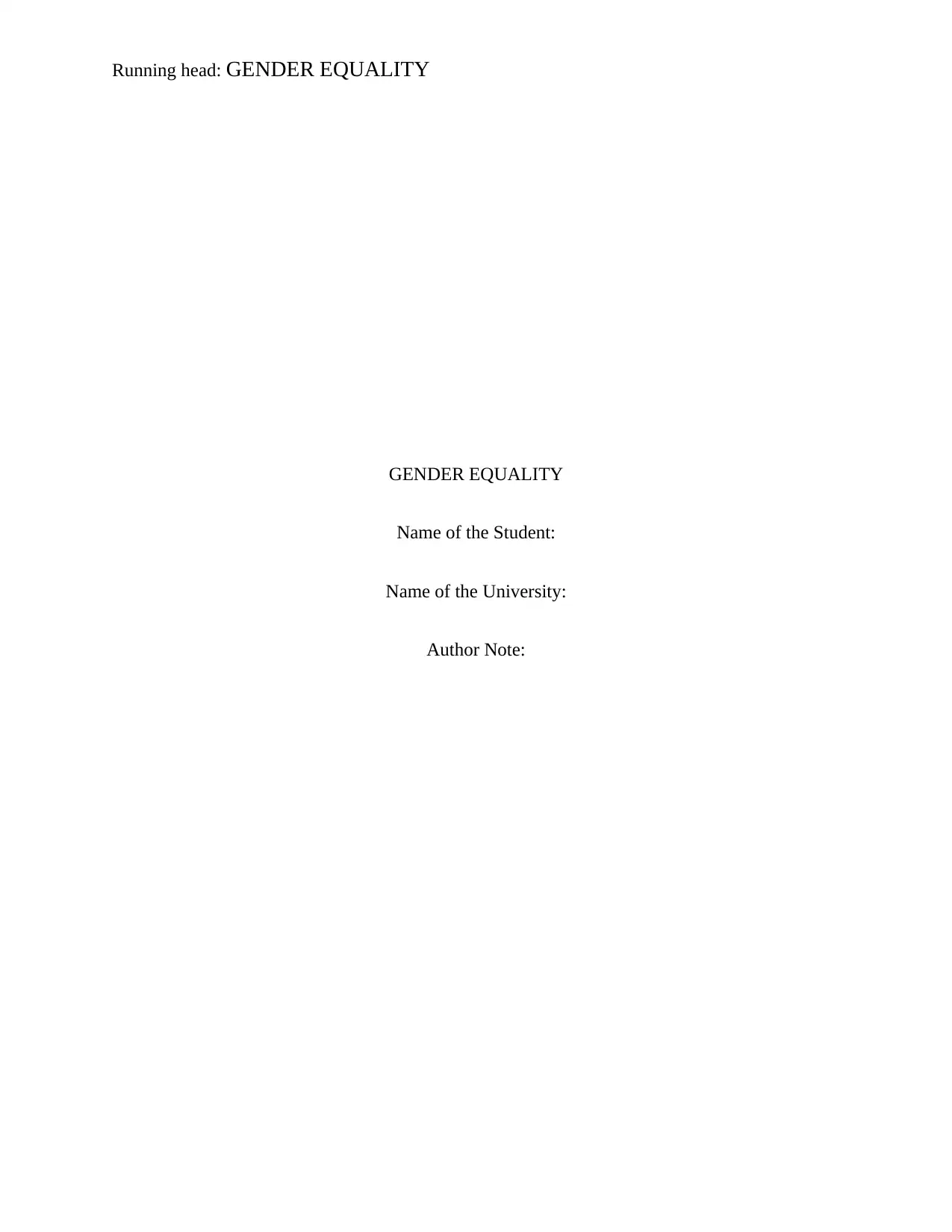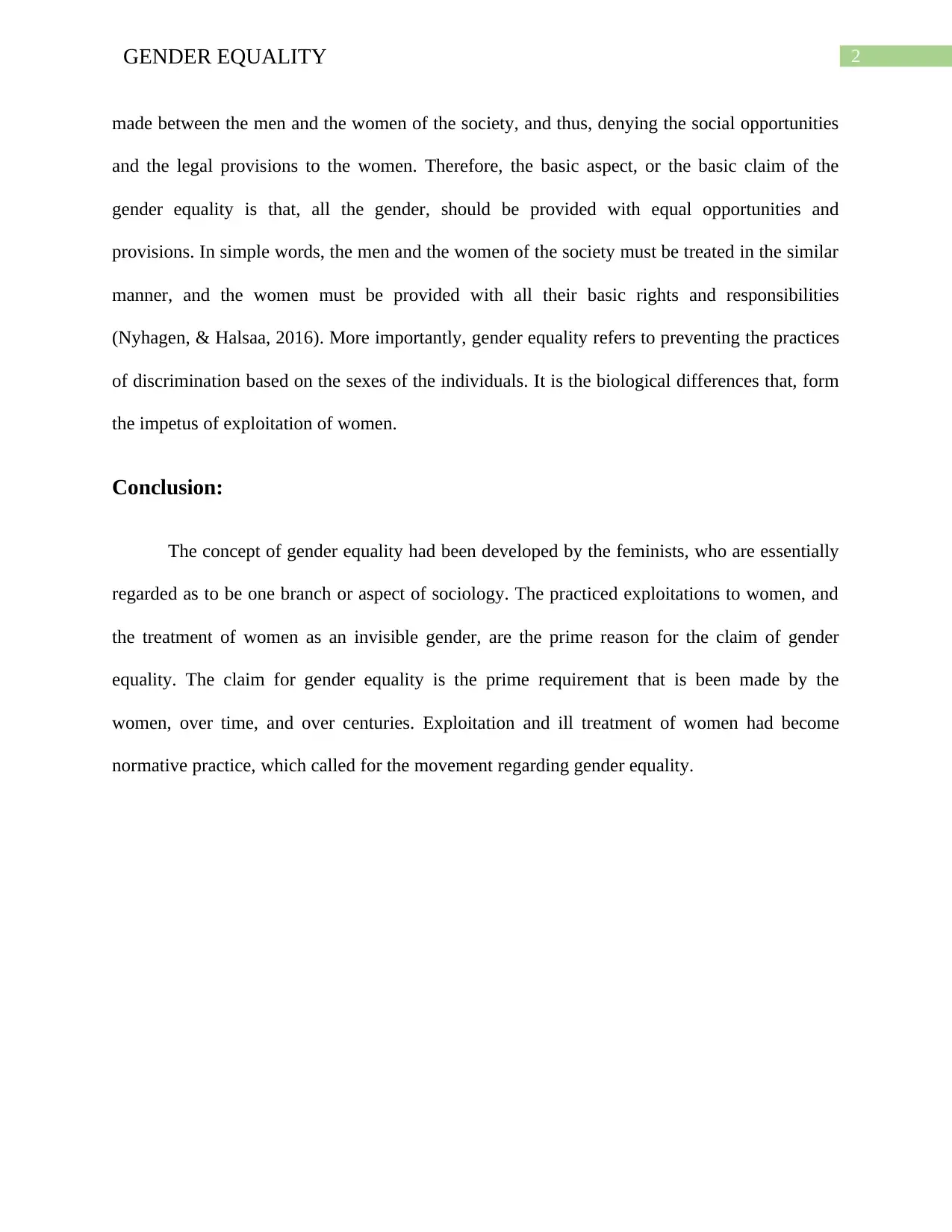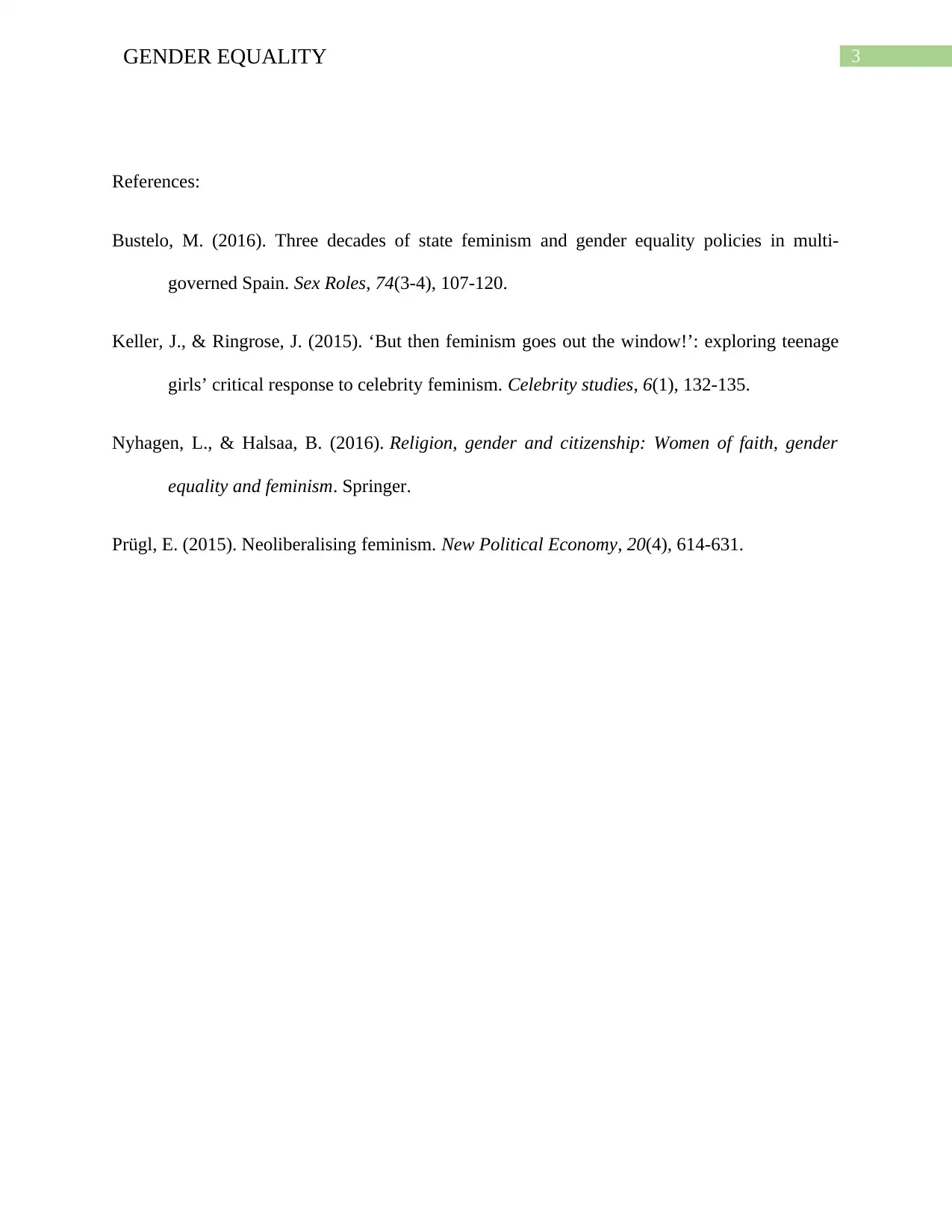Gender Equality: Exploring Societal Views and Implications
VerifiedAdded on 2022/10/09
|4
|741
|19
Essay
AI Summary
This essay delves into the critical issue of gender equality from a sociological standpoint. It begins by highlighting the historical and ongoing importance of women's empowerment and equal opportunities across various societal levels, including socio-political, cultural, and economic spheres. The essay defines gender equality as providing women with the same resources and opportunities as men, challenging historical exploitations and inequalities that have disproportionately affected women. It clarifies that gender equality doesn't mean men and women are identical but rather that women should have the same rights and access to resources. The discussion emphasizes that social distinctions, rather than biological differences, have historically denied women equal opportunities and legal provisions. The essay concludes by noting that the concept of gender equality was developed by feminists and is a fundamental requirement for societal justice and equality, stemming from historical exploitation and the need to treat women as equal members of society. The essay references key sociological studies on the subject.
1 out of 4











![[object Object]](/_next/static/media/star-bottom.7253800d.svg)